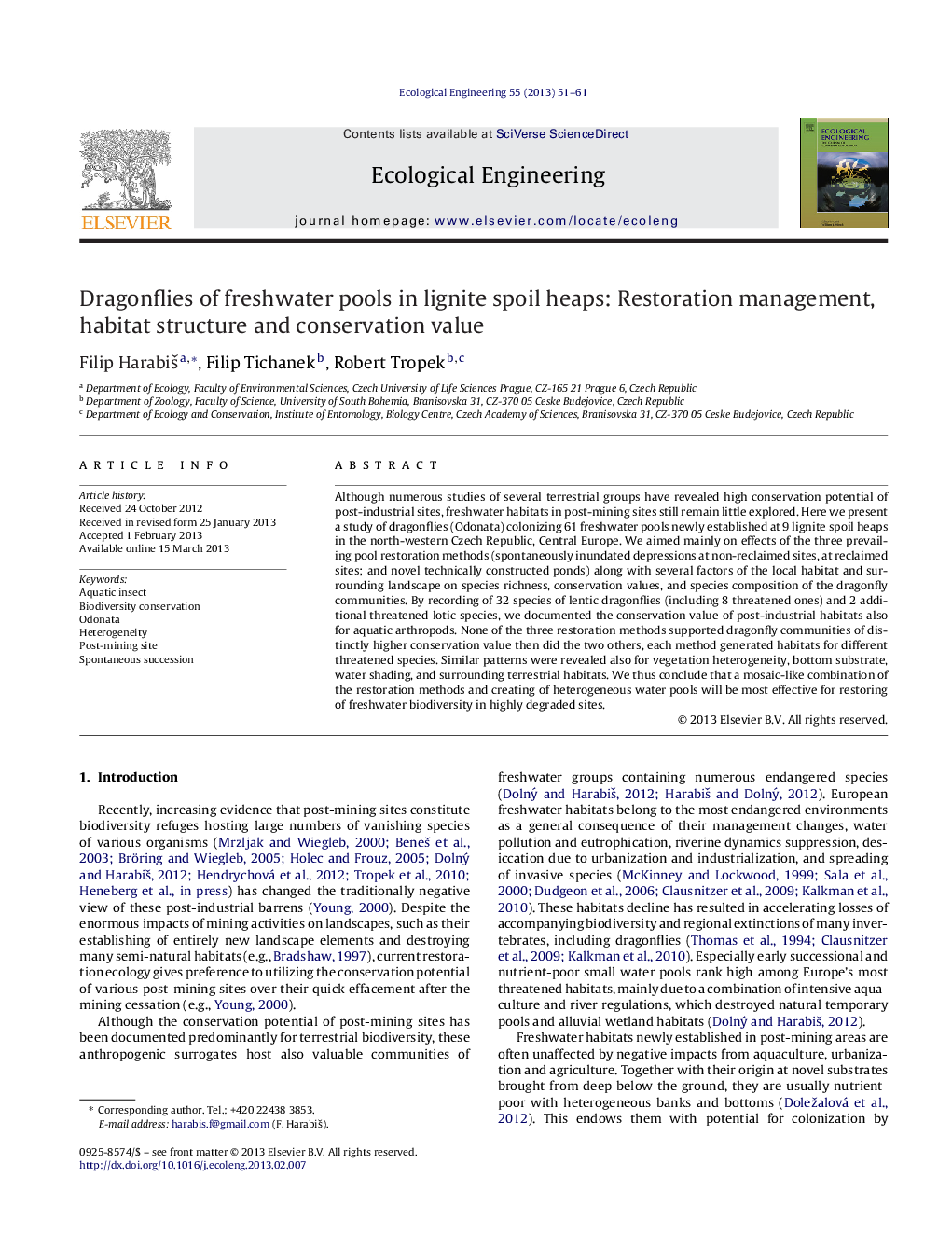| Article ID | Journal | Published Year | Pages | File Type |
|---|---|---|---|---|
| 4389776 | Ecological Engineering | 2013 | 11 Pages |
Although numerous studies of several terrestrial groups have revealed high conservation potential of post-industrial sites, freshwater habitats in post-mining sites still remain little explored. Here we present a study of dragonflies (Odonata) colonizing 61 freshwater pools newly established at 9 lignite spoil heaps in the north-western Czech Republic, Central Europe. We aimed mainly on effects of the three prevailing pool restoration methods (spontaneously inundated depressions at non-reclaimed sites, at reclaimed sites; and novel technically constructed ponds) along with several factors of the local habitat and surrounding landscape on species richness, conservation values, and species composition of the dragonfly communities. By recording of 32 species of lentic dragonflies (including 8 threatened ones) and 2 additional threatened lotic species, we documented the conservation value of post-industrial habitats also for aquatic arthropods. None of the three restoration methods supported dragonfly communities of distinctly higher conservation value then did the two others, each method generated habitats for different threatened species. Similar patterns were revealed also for vegetation heterogeneity, bottom substrate, water shading, and surrounding terrestrial habitats. We thus conclude that a mosaic-like combination of the restoration methods and creating of heterogeneous water pools will be most effective for restoring of freshwater biodiversity in highly degraded sites.
